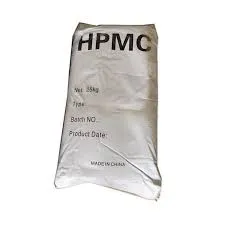
sep . 03, 2024 16:30 Back to list
use of hydroxypropyl methylcellulose
The Use of Hydroxypropyl Methylcellulose An Overview
Hydroxypropyl methylcellulose (HPMC) is a versatile cellulose derivative that has gained significant attention across various industries due to its unique properties and functional capabilities. Its application spans food, pharmaceuticals, construction, and cosmetics, making it an essential ingredient in numerous formulations.
HPMC is a white, odorless, and tasteless powder that is soluble in cold water, forming a smooth gel-like solution. One of its primary roles is as a thickening agent, which enhances the viscosity of solutions without altering their taste or clarity. This property makes HPMC indispensable in the food industry, particularly in the production of sauces, ice creams, and baked goods. For instance, it helps stabilize emulsions, preventing the separation of ingredients and improving the overall texture of food products.
The Use of Hydroxypropyl Methylcellulose An Overview
The construction industry also recognizes the benefits of HPMC, particularly in the formulation of cement-based products. Its inclusion in tile adhesives and mortar improves workability and water retention, thereby enhancing adhesion properties and prolonging the setting time. This makes handling and installation more efficient, which is crucial in modern construction practices.
use of hydroxypropyl methylcellulose

In cosmetics and personal care products, HPMC acts as a stabilizer and thickener, enhancing the texture and application of lotions, creams, and gels. Its compatibility with a wide range of cosmetic ingredients makes it a preferred choice for formulators looking to optimize product performance while ensuring skin safety and comfort.
Beyond these primary applications, HPMC also finds use in the production of 3D printing materials, where its thickening properties can be crucial for creating stable and consistent filament for printers. This emerging application showcases HPMC's adaptability across cutting-edge technologies.
Sustainability is another important aspect of HPMC. As it is derived from renewable cellulose sources, its use is often considered more environmentally friendly compared to synthetic polymers. Many manufacturers and consumers are increasingly seeking sustainable alternatives in their products, making HPMC a favorable choice.
Despite its numerous advantages, it is essential to note that proper formulation and dosage are crucial to harnessing the full potential of HPMC in various applications. Its performance can be influenced by factors such as molecular weight and degree of substitution, requiring careful consideration during product development.
In conclusion, hydroxypropyl methylcellulose is a multifunctional polymer that plays a crucial role in several industries. From enhancing food texture to providing effective drug delivery and improving construction materials, HPMC's unique properties make it an indispensable ingredient. As industries continue to evolve and emphasize sustainability, the importance of HPMC is likely to grow, paving the way for new and innovative applications in the future. Its versatility and performance will enable continued advancements in formulation technology, benefitting both manufacturers and consumers alike.
-
Versatile Hpmc Uses in Different Industries
NewsJun.19,2025
-
Redispersible Powder's Role in Enhancing Durability of Construction Products
NewsJun.19,2025
-
Hydroxyethyl Cellulose Applications Driving Green Industrial Processes
NewsJun.19,2025
-
Exploring Different Redispersible Polymer Powder
NewsJun.19,2025
-
Choosing the Right Mortar Bonding Agent
NewsJun.19,2025
-
Applications and Significance of China Hpmc in Modern Industries
NewsJun.19,2025







